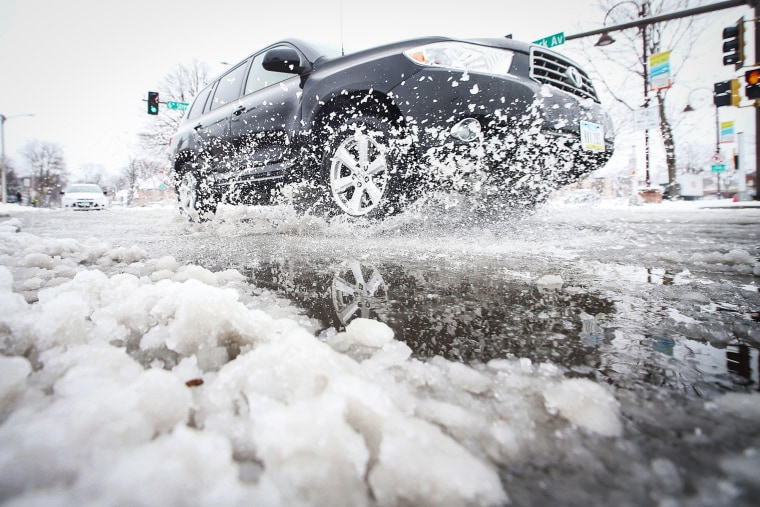[ad_1]
A high-impact winter storm is forecast to bring rain and snow to an area spanning from California through the northern Plains to Michigan’s Upper Peninsula.
More than 20 million people are under winter weather alerts Sunday, including in Denver; Minneapolis; Sioux Falls, South Dakota, and Bismarck, North Dakota.
More than 12 inches of snow had already accumulated in Alta, Utah, as of Sunday morning, with the Alta Ski Area reporting 22 inches in 24 hours. In Flagstaff, Arizona, more than 7 inches of snow had fallen and in Bellemont, a town 12 miles north, 10 inches of snow fell.
Heavy snow will continue to develop over the central and northern Plains on Sunday afternoon, with blizzard conditions that will create hazardous travel conditions overnight, affecting parts of Colorado to Minnesota. A dangerous combination of 2 inches per hour of snowfall and 60 mph wind gusts is possible.
“Strong winds and heavy, wet snow on trees and power lines may damage trees and cause power outages,” the National Weather Service said in an update Sunday. “Wind gusts over 50 mph today may result in power outages, blowing dust with reduced visibility, difficult travel and property damage.”
The forecast held true Sunday night as the weather service office for the Twin Cities reported a snowfall rate of 1 to 2 inches an hour. Social media imagery from Waterloo, Iowa, verified by NBC News showed near whiteout conditions before sunset.
The weather service office for Boulder, Colorado, reported a salad bar of precipitation, including “a band of rain/snow/graupel/hail/ice pellets & whatever other hydrometeors you may be seeing.” Social media video from southwest Denver, verified by NBC News, appeared to show graupel falling in the late afternoon.
Steady snow showers will persist through Monday, with snow clearing out and into Canada by Tuesday evening. The area from Nebraska to northern Wisconsin will likely see about 8 to 16 inches of snow, with some areas receiving up to 20 inches.
This same storm system will also spark heavy rain and severe weather concerns across the southern Plains and Southeast through the next two days.
On Sunday, the storm was forecast to target Kansas and Oklahoma, including Wichita and Dodge City. Storms overnight will be capable of producing very large hail, tornadoes and damaging wind gusts.

By Monday, this risk will shift into east Texas and the lower Mississippi Valley, affecting 7 million in Louisiana, including New Orleans, Baton Rouge and Shreveport. Damaging wind gusts will be the primary concern with any storms that form Monday afternoon and evening, with a few tornadoes possible.
Localized flash flooding may also occur across the South including in Missouri, Arkansas, Mississippi and Alabama, where rainfall totals through Tuesday will range from 1 to 3 inches, and locally up to 4 inches.
Over the weekend, a powerful weather system affected the tri-state area with heavy rain and strong winds, as a fast-moving storm blanketed northern New England with snow.
Snowfall totals as of Sunday afternoon included 33.1 inches in West Windsor, Vermont, 32 inches in Landgrove, Vermont, and 29 inches in East Millinocket, Maine, according to the National Weather Service.
A storm Saturday dumped 3.06 inches of rain at a gauge in Philadelphia, setting a new daily rainfall record and marking the wettest day recorded in March at the weather service’s official observing site.
In Chester, Pennsylvania, south of Philadelphia, efforts to rescue a 6-year-old girl who slipped into a rain-swollen creek Saturday turned into a recovery operation, authorities said on Sunday afternoon. But the U.S. Coast Guard was expected to continue to scan the waters of the nearby Delaware overnight, they said.
More than 151,000 utility customers were without power Sunday night in New York, New Hampshire, and Maine, according to utility tracker PowerOutage.us.
Earlier in the day the figure was more than 350,000 throughout the Northeast.
[ad_2]
 FARRATA NEWS Online News Portal
FARRATA NEWS Online News Portal






